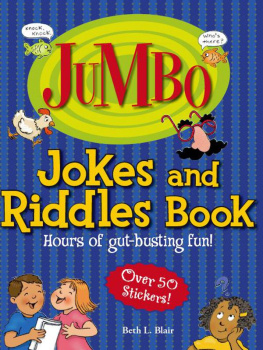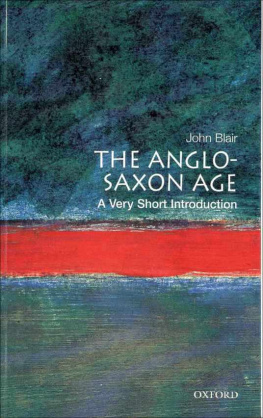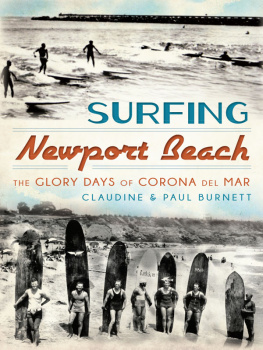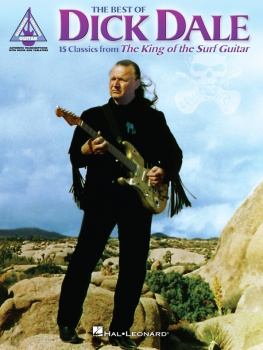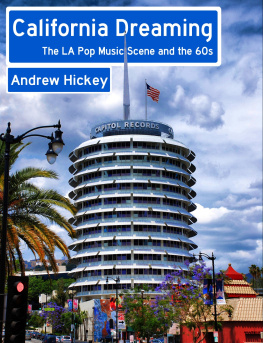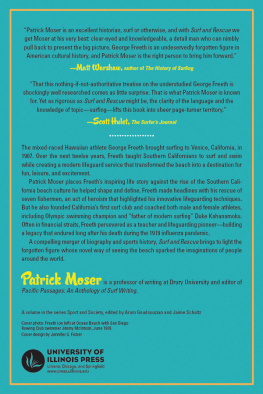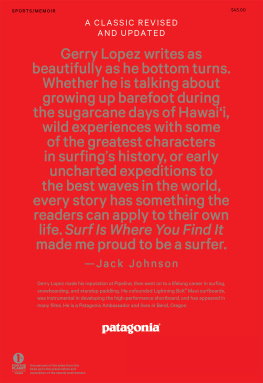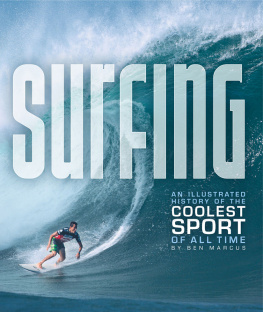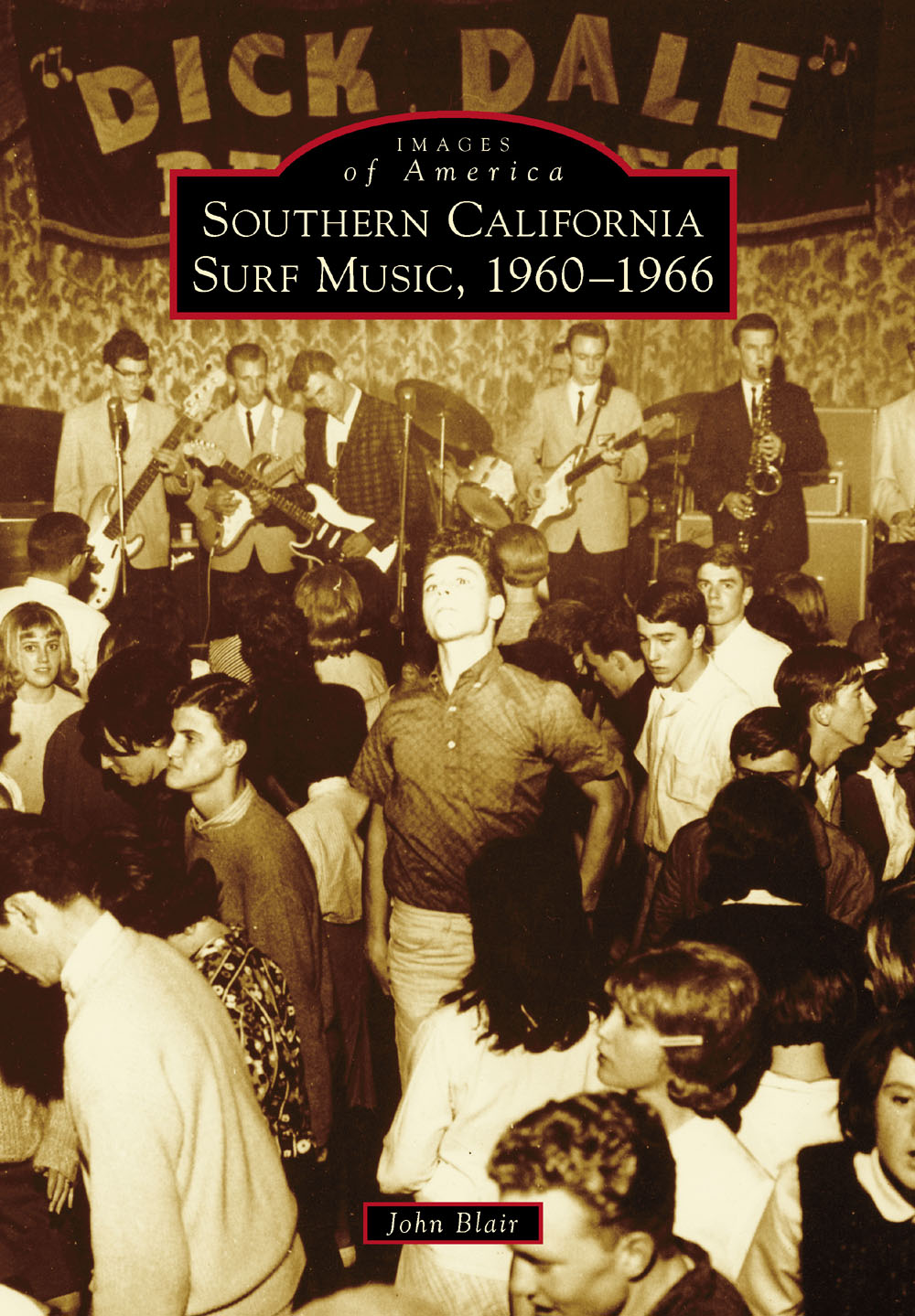
IMAGES
of America
SOUTHERN CALIFORNIA
SURF MUSIC, 19601966
ON THE COVER: Dick Dale, King of the Surf Guitar, and his band, the Del-Tones, hold court at the Harmony Park Ballroom in Anaheim, California, in 1962. This is a scene from a short film commissioned by Capitol Records to help promote Dale nationally. The film was intended for television shows and record hops.
IMAGES
of America
SOUTHERN CALIFORNIA
SURF MUSIC, 19601966
John Blair

Copyright 2015 by John Blair
ISBN 978-1-4671-3320-3
Ebook ISBN 9781439650714
Published by Arcadia Publishing
Charleston, South Carolina
Library of Congress Control Number: 2014951924
For all general information, please contact Arcadia Publishing:
Telephone 843-853-2070
Fax 843-853-0044
E-mail
For customer service and orders:
Toll-Free 1-888-313-2665
Visit us on the Internet at www.arcadiapublishing.com
This book is dedicated to those who were teenagers in Southern California during the early 1960s and whose weekends were spent dancing to surf bands at the Retail Clerks Union Hall Auditorium, Rendezvous Ballroom, Harmony Park Ballroom, Lido Ballroom, and Pavalon Ballroom. I hope this book helps to relive some of those fond memories.
CONTENTS
ACKNOWLEDGMENTS
I am indebted to the following individuals for providing photographs, information, and technical assistance: Susan Berumen (Orange County Archives), Bob Blankman (First American Corporation), Peggi Collins, Bob Dalley, Art Goddard (Costa Mesa Historical Society), Bob Irwin (Sundazed Records), Aaron Jacobs, Chris Jepsen (Orange County Archives), Paul Johnson, David Lessard, Kathy Marshall, Stephen McParland (payhip.com//CMusicBooks), Randy Nauert, Brian Neal (surfguitar101.com), Jane Newell (Anaheim Historical Society), Richard Siegle (Fender Musical Instruments), Richard Smith (Fullerton Museum), Bob Spickard, Jon Stebbins, and E. Jill Thrasher (Sherman Library and Gardens).
Having studied and written about early 1960s surf music for many years, I know I have forgotten the names of many people who have provided help along the way. So, to all of the musicians, record companies, historians, and discographers, forgive me if I have failed to acknowledge you here. I am indebted to all of you.
Unless otherwise credited, all images are courtesy of the author.
INTRODUCTION
Unlike other forms of American roots music, such as bluegrass, country western, Cajun, or gospel, surf music had its beginning at a very specific geographic location: the beach communities of Southern California. It was here, between the summer of 1960 and the winter of 1961, that a new sound of rock n roll emerged and culturally fused with the mythology of surfing.
On a national level, surf music was primarily represented by vocal groups such as the Beach Boys, Jan & Dean, and Bruce & Terry. Locally, it was the guitar-driven instrumental music of thousands of teenage garage bands. It was a musical phenomenon that escalated in intensity, much like early rock n roll from 1956 to 1958.
The originator of the sound that became synonymous with surf music was Dick Dale and his band, the Del-Tones. Hundreds of teenagers converged on the Rendezvous Ballroom in Balboa every weekend by the fall and winter of 1961. The crowds grew until he was attracting several thousand teenagers every night. This level of popularity by a local musician was unheard of at the time.
It was Dale who first used the term surfing sound to describe the style of his guitar playing. Since surfing was one of his favorite sports, he attempted to musically reproduce the feeling he had while surfing. The result of this somewhat nebulous and certainly subjective approach was the surfing music genre. The feeling was one of vibration and pulsification, which he produced by a heavy staccato picking of the low-key strings of his guitar, accompanied by a heavy, thunder-like beat. This was his surfing sound, and he allowed it to take an instrumental form.
Between the late 1950s streetwise rock n roll of Elvis Presley and Chuck Berry and the safer teen idol recordings two or three years later by singers such as Bobby Rydell or Frankie Avalon, there was the golden age of rock instrumentals. The electric guitar became the lead singer in a large number of local and national hit records by artists such as Link Wray, Duane Eddy, the Ventures, and the Fireballs. This had a great deal to do with Dales choice of the instrumental medium to express his surfing sound, while his admiration for big band drummers such as Gene Krupa and Buddy Rich fueled his use of heavy, dance-tempo rhythms. Dale described it this way: Surf music is a definite style of heavy staccato picking with the flowing sound of a reverb unit to take away the flat tones on the guitar and make the notes seem endless. Very heavy guitar strings are used to elongate the sound from the vibration of the strings, not the feedback qualities of an amplifier. It becomes a very in-depth combination of things that, when put together, spells out true surf music.
The electronics behind Dick Dales sound was due to Leo Fender, of Fender Musical Instruments in nearby Santa Ana. He and Dale worked closely for several years to test and improve amplifiers and to develop the Fender Reverb Unit, a device that gave the electric guitar a wet sound (imagination required, but the sound of a reverbed guitar is memorable), which quickly became the defining sound of surf music.
Dale would road test equipment modifications for Fender at the Rendezvous Ballroom. This collaboration produced and refined the Showman amplifier. Together with its two-speaker model, the Double (or Dual, as it became known) Showman, these were the most powerful guitar amplifiers on the market for several years.
It was not until the Beach Boys hit the scene in late 1961 that Dale began to move into second place locally. The significance of the Beach Boys first record, Surfin, was that it was not an instrumental, but a song with words about the surfing lifestyle of Southern California. The lifestyle that formed the basis of, and a causal relationship with, surf music had been developing since the 1950s and was, in retrospect, a sociological and cultural phenomenon somewhat exclusive to Southern California. Surf music produced an immediate identity with the teenagers whose lifestyle had reached a point where the music could not only emphasize it, but represent it as well. The music reflected many aspects of this lifestyle, including dress and language.
The mold that the Beach Boys created with their early vocal and harmony-dominated surfing songs attempted to capture that essence of being a teenager and living in Southern California. Their recordings achieved a wide geographic exposure, and Surfin allowed a semblance of the local experience to be vicariously shared by people in other areas of the country and overseas. Soon, instrumental and vocal groups across the country and around the world jumped on the bandwagon. Local scenes developed that were well defined in some cases, though not as integrated as in California.
Dick Dale, the Beach Boys, and Jan & Dean all came from the beach communities of Los Angeles and Orange Counties. So did the Lively Ones, Chantays, Eddie & the Showmen, Blazers, Dave Myers & the Surftones, Adrian & the Sunsets, and scores of others. The boundaries of Orange County stretch to the Pacific Ocean, from Huntington Beach in the north to San Clemente in the south, bracketing nearly 30 miles of prime surfing territory along Californias southern coastline.
Next page

